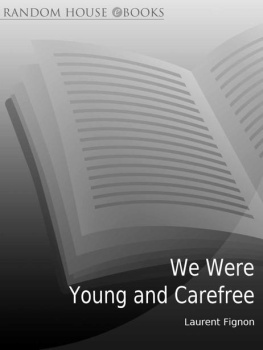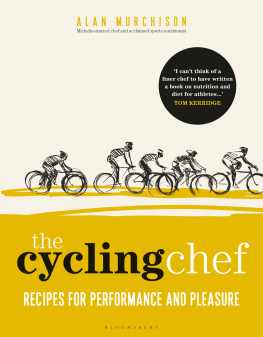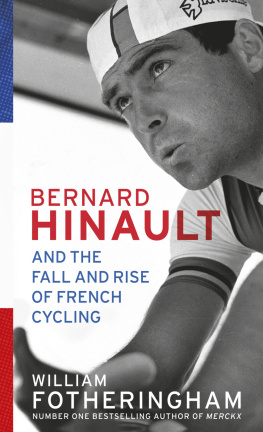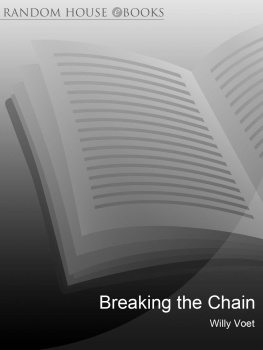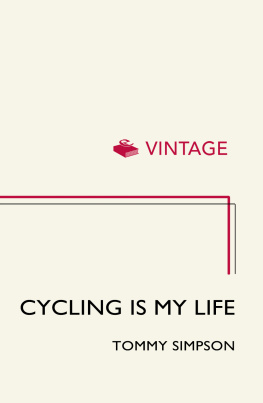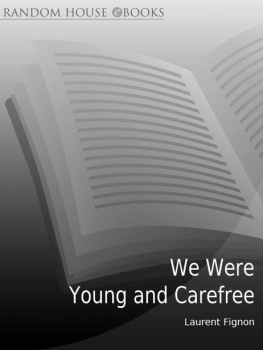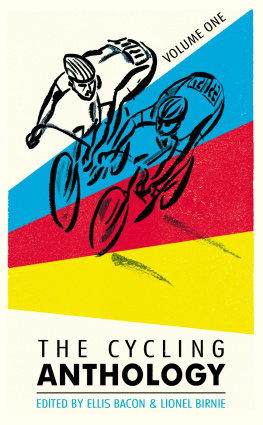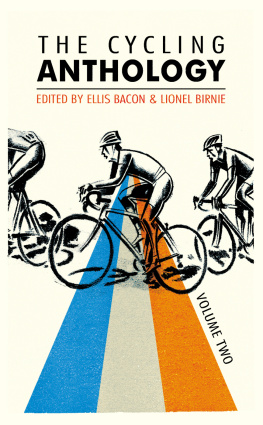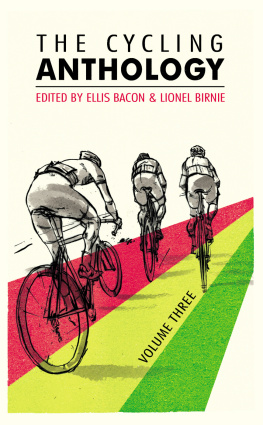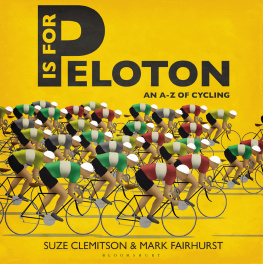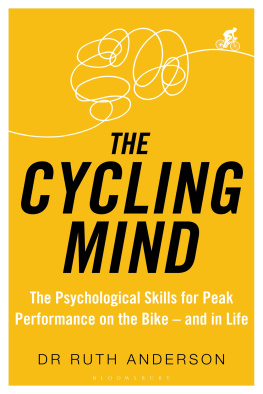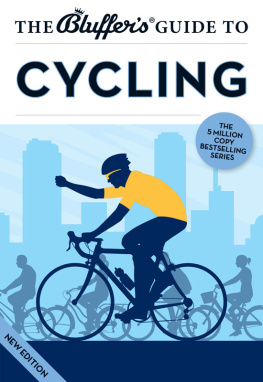Table of Contents
This eBook is copyright material and must not be copied, reproduced, transferred, distributed, leased, licensed or publicly performed or used in any way except as specifically permitted in writing by the publishers, as allowed under the terms and conditions under which it was purchased or as strictly permitted by applicable copyright law. Any unauthorised distribution or use of this text may be a direct infringement of the authors and publishers rights and those responsible may be liable in law accordingly.
Epub ISBN: 9781407075211
Version 1.0
www.randomhouse.co.uk
Published by Yellow Jersey Press 2010
2 4 6 8 10 9 7 5 3 1
Copyright ditions Grasset & Fasquelle, 2009
English translation William Fotheringham, 2010
Laurent Fignon has asserted his right under the Copyright, Designs and Patents Act 1988 to be identified as the author of this work
This book is sold subject to the condition that it shall not, by way of trade or otherwise, be lent, resold, hired out, or otherwise circulated without the publishers prior consent in any form of binding or cover other than that in which it is published and without a similar condition, including this condition, being imposed on the subsequent purchaser
First published as Nous tions Jeunes et Insouciants in 2009 by ditions Grasset & Fasquelle, Paris
First published in Great Britain in 2010 by
Yellow Jersey Press
Random House, 20 Vauxhall Bridge Road, London SW1V 2SA
www.rbooks.co.uk
Addresses for companies within The Random House Group Limited can be found at: www.randomhouse.co.uk/offices.htm
The Random House Group Limited Reg. No. 954009
A CIP catalogue record for this book is available from the British Library
ISBN 9780224083195
The Random House Group Limited makes every effort to ensure that the papers used in its books are made from trees that have been legally sourced from well-managed and credibly certified forests. Our paper procurement policy can be found at: www.rbooks.co.uk/environment
Printed and bound in Great Britain by CPI Mackays
CONTENTS
TRANSLATORS NOTE
I have a confession to make: a teenage crime against two-wheeled taste that haunts me when I look at old photographs. In the early 1980s I wore a sweatband when I rode my bike. At the time people may have thought it was inspired by John McEnroe, but the guilty party was Laurent Fignon. I wanted to look like Laurent but it didnt work out. His black, white and yellow Renault band looked fine against his sunbleached blond hair, thin-rimmed metal spectacles and scary blue eyes. Mine didnt have quite the same aura, but I was struggling through ten-mile time trials on a back road in North Devon rather than wearing the yellow jersey of the Tour de France on the Col du Galibier.
Like his contemporary Robert Millar they both rode their first Tours in 1983 and their last in 1993 Fignon came into my life twice in two completely different guises, first as a hero of my years as a teenage cyclist, then later as one of the more fascinating characters I worked with as a journalist. I spent the summer of 1984 with Fignon and Millar, glued to the daily Tour de France television coverage in the home of cycling-mad friends in Normandy. That was Fignons finest July: the most dominant Tour win anyone had seen since the years of Eddy Merckx, his tally of five stage wins both mountain stages and time trials unmatched until Lance Armstrong arrived. By the end of the month, the roads of France were teeming with youngsters wearing sweatbands, Fignon-style.
Five years later, I had only recently begun working at Cycling Weekly , Britains leading bike racing magazine, when the then editor, Martin Ayres, came to me with a dilemma. It was the Friday before the final weekend of the 1989 Tour de France and he had to make a call over the magazines cover for the following week: Greg LeMond or Laurent Fignon. In essence, he had to decide which of the two would win the closest Tour de France in history. Fignon had a 50sec lead on LeMond, and jointly we calculated that this might well be enough to keep him in the yellow jersey through the final time trial. Knowing the cover picture couldnt be changed, there was consternation as we read the wire reports on the Sunday afternoon, when LeMond overturned Fignons lead, achieving what had seemed impossible. We werent the only ones to misread that particular epic, however.
A month later, Fignon was a key player in the first world championship road race I saw from the press box. On the rainsoaked Cte de la Montagnole at Chambry, he refought his duel of July with LeMond, the pair trading attack for counter-attack on the final lap. Inevitably it was LeMond who made the effort to bring Fignon back to the fold when he attempted one last move in the final kilometre. As at the Tour, LeMond got the jersey a rainbow-striped one to go with his yellow from July and Fignon was one of the also rans. He doesnt even mention his sixth place in this book, quite possibly because it wasnt something he wanted to remember. But watching him that day, it was impossible not to admire the man, the way he wanted to grab the race by the scruff of the neck and bend it to his will. That he couldnt manage it simply added to the fascination.
The first time I actually met Fignon was not auspicious: he was late and he didnt like answering questions. But his slightly curt manner was a front: he wanted to sort out the professional journalist sheep from the timewasting goats. He didnt suffer fools gladly, but he seemed to have a deeper view of his sport than most of his contemporaries. Talking to him was one of the more rewarding tasks when covering bike races. The nickname he was given briefly in the 1980s the Professor, on the strength of an abortive attempt at university seemed well merited. Together with photographer Phil OConnor and Fignons sidekick Alain Gallopin we enjoyed a day out in Paris in 1992, shooting a vast feature for Cycling Weekly . We began with an elaborate cocktail at the Caf de Flore, once the haunt of Jean-Paul Sartre and Simone de Beauvoir, followed that up with a browse in a fine antiquarian bookshop, and ended up on the Eiffel Tower. As he posed on the platform for a picture with his native Paris outlined behind him, I noticed how hard his hand was gripping the rail: he suffered from vertigo, he told me.
All this may begin to explain why I was determined, as translator, to help bring Fignons story to an English-speaking audience. By the time I knew him, at the end of his career, Fignon was an elder statesman. His views on the way the sport should be run struck me as more considered than those of the guys who did run it. He was a rare beast among elite sportsmen in having feelings and ideas about his sport that went far beyond the next win and the next contract. Those facts alone should ensure this book an audience.
The key events in We Were Young and Carefree take place between 1982 and 1989: a lifetime away for most of the cyclists now riding the Tour de France, and more for those who aspire to it. Its a truism, but the 1980s now seem like a different world, one of Simplex Retrofriction brake levers on thin, steel downtubes, flapping gear cables, bare heads without skid lids, and crochet-backed cycling gloves. This book matters, because it describes, from the inside, the dying gasps of a style of cycling that had changed relatively little since the 1960s: far less polished than todays sport, less predictable, less controlled, and more amateurish in every sense.
As he told me, and as he writes here, Fignon has gone down in cycling folklore as the man who lost the closest Tour ever, rather than a man who won it twice. His place in the pantheon should be among the few who won the Tour at their first attempt Bernard Hinault, Fausto Coppi, Eddy Merckx and the elite who have taken five stage wins en route to the overall title. He is also one of the select group who have taken back to back victories in MilanSan Remo, one of the hardest Classics to win. Others include Merckx, Coppi and Classics non-pareil Roger de Vlaeminck.

